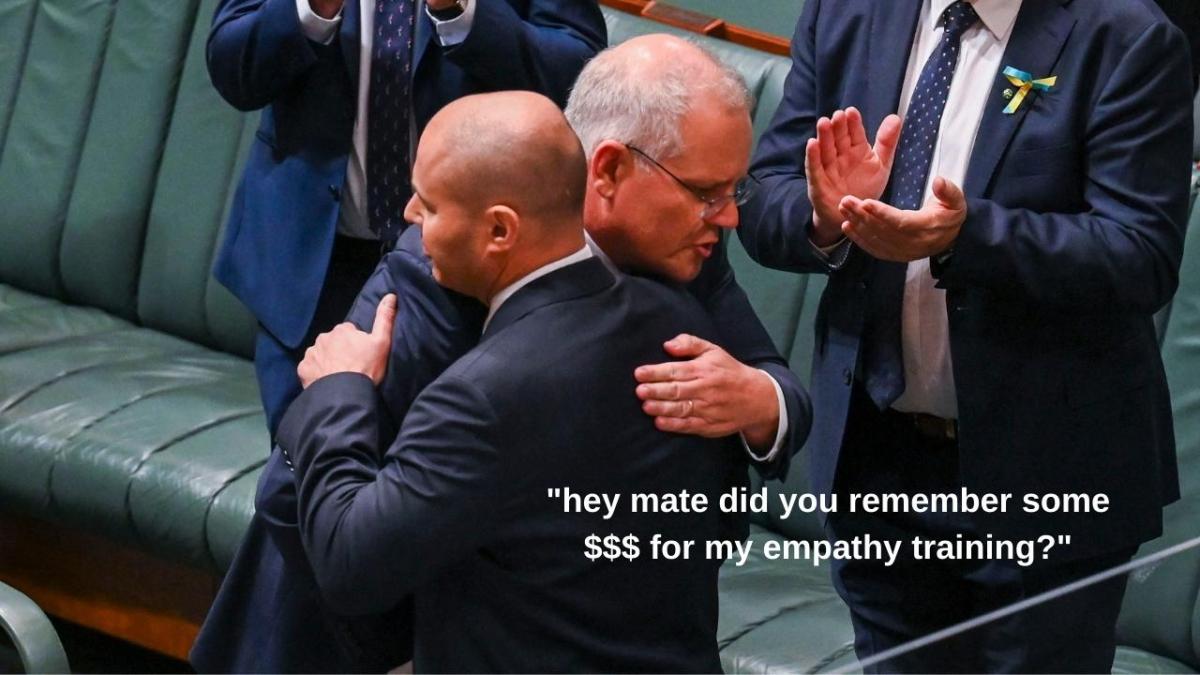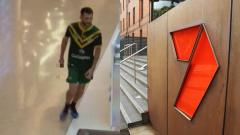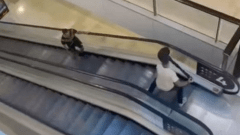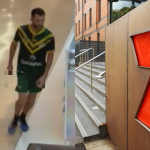
The federal budget is shit. Let’s be real. It’s a very long and weird set of documents that have all the interesting bits tucked behind walls of numbers and waffle.
As if it wasn’t bad enough, the Treasurer (Josh Frydenberg, if you are as blissfully unaware of politics as we wish we were) gets up and gives a long speech with oddly short sentences filled to the brim with spin. It sucks, and our boss made us watch it so you wouldn’t have to.
Here’s what we learned:
Tax cuts and cash handouts
The government announced a number of measures intended to address the high cost of living at the moment and appeal to the so-called everyday Australian’s hip pocket.
The first is to help lower the cost of petrol for consumers as it remains above $2 per litre across most of the country.
The government confirmed the tax on petrol would be halved from 44.2 cents to 22.1 at midnight on Tuesday for six months. The idea is that retailers will pass those savings onto us (though no guarantees, it’s a free market after all), so we can expect to see petrol at more like $1.80 per litre in about two weeks.
The government estimated an average car would be $15 cheaper to fill up, saving a regular driver who fills up weekly $350 in six months.
Pensioners, welfare recipients and concession card holders — about 6 million Aussies — will also receive one-off, $250 tax-free payments automatically in April.
The government’s low- and middle-income tax offset has also been extended for another year and will give workers earning under $126,000 an extra $420 in their tax returns than they did last year.
But unfortunately inflation is predicted to remain disturbingly high and wage growth disturbingly low for at least the rest of the year so living is likely to be pretty unaffordable for a while.
There’s something (but not a lot) for the gals
Frydenberg said in his speech this year “more women [were] in work than ever before,” which is giving 1950s. Slay girlbosses.
After the absolute car crash of a year the government had dealing with sexism and gender inequality it’s put *some* effort into showing women it cares about them.
We even get our own separate Women’s Budget again. Ooooo.
But a lot of the funding came down to whether or not you’re a mum so young women who don’t have dependents or aren’t prospective parents don’t get much.
There’s a big new women’s health package which will put some money towards things like breast cancer treatment and screenings, cervical cancer screenings and stillbirth and miscarriage support and a measly $58 million endometriosis treatment package, but not heaps else.
The big spend in here is a $1.3 billion pledge over six years on domestic violence support.
“One in four women are subject to domestic violence and tragically, every 11 days, an Australian woman loses her life at the hands of her current or former partner,” Frydenberg said.
The broad range of measures have been identified in the National Plan to End Violence Against Women and Children and will cover things like frontline domestic violence services, emergency accommodation and better access to legal and health services.
There’s money for apprentices (and more for their bosses)
Looking to find work? Well, good news. If you want to be a tradie. The government has increased support for apprentices and their employers. During the pandemic the number of apprentices grew to 220,000.
It will spend $954.0 million over five years to start up a new Australian Apprenticeships
Incentive System which will support “priority occupations”. It will kick off on July 1.
The government will also spend $2.8 million on increasing the number of government-supported apprenticeships by 2500 places.
That’ll mean even more young tradies receiving a $5000 grant and their bosses receiving a bit of help paying their wages, up to $8750 over three years and a one-off $4000 payment.
Buying a first home could be easier, if you’re lucky
Still struggling to buy a house? Well, if you’re lucky enough to be able to find the cash for a 5 per cent deposit and then are also lucky enough to get one of the 50,000 Home Guarantee Scheme spots, you’re in!
The places are broken up into: 35,000 for your run-of-the-mill first-home buyers, 10,000 for those in the regions and 5000 for single parents. The single parent option only requires a 2 per cent deposit and could conceivably be counted as a win for women who are fleeing a domestic violence situations. So that’s not terrible!
These schemes will cost the government $8.6 million over the next four years.
We’d like to note that while 5 per cent is a lot more reasonable than the usual 20 per cent the banks ask for — it’s still a fair whack of cash if you’re trying to buy in the major cities. And no, this budget doesn’t have anything to bring those prices down to a more reasonable level. If you wanted that, stiff shit, I guess?
The government kicked in more cash to help your noggin’
Last year, the Coalition committed a fkn ‘yuge $2.3 billion to mental health. It’s now committed to investing another $547 million on top of that. Good to see, good to see.
The biggest investment is going towards expanding mental health services for young people with severe and complex mental illnesses. The Coalition’s committed $206.5 million. Other services are getting a cash boost too. Headspace will receive $14.8 million over the next four years and Lifeline will get $52.3 million.
There’s also has a specific investment in mental health support for multicultural communities. It’s committed $17.8 million for cultural and linguistically diverse communities and refugees to access mental health care.
“Mental illness can be completely debilitating for patients and their families. Too many people are living lives of quiet desperation,” Frydenberg said in his speech.
Billions for the flood-affected
“Our thoughts are with those who have lost loved ones, homes and businesses in the catastrophic floods across New South Wales and South-East Queensland,” Frydenberg said.
Total support for flood-affected communities (including families, businesses and government) is expected to cost more than $6 billion. That’ll include partly reimbursing the State Governments for the money they’ve spent on rebuilding public infrastructure like roads and schools.
A big ‘ol $2.2 billion is going to households and will cover temporary accommodation, social services and income support. Farmers and businesses will get a significantly lower chunk of funding: $665 million. The final chunk of those funds is $589 million for community clean up and recovery and $300 million of that will go to the Emergency Response Fund.
It’s a pretty significant investment: for comparison, the Government committed $2.8 billion for the 2019-2020 bushfire recovery and $1.5 billion for the Queensland floods in 2019.
Still not much to address climate change, though
Look, it’s not great in here.
There is no new direct funding for renewable energy projects and therefore no investments in reducing emissions.
It announced a lil $250 million investment over five years into hydrogen (read: emission producing) technologies, but that’s all.
The budget also includes a $1 billion investment into helping restore the Great Barrier Reef, as announced last month. But it won’t do much without addressing its biggest threat: climate change.
The government also put $60 million aside to fund technology to recycle soft plastics better. This could actually be beneficial to reducing pollution but again, it’ll all mean nothing if the world keeps heating as it is today.







